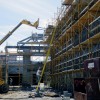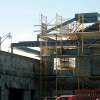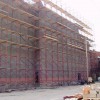Scaffolding
Scaffolding has multiple functions and a variety of configurations, enabling it to meet the needs of virtually any construction or maintenance project. One function of a scaffolding system (sometimes referred to as staging) is to provide safe temporary access for workers and materials to an elevated area of a building, either interior or exterior, for construction, alteration, or routine maintenance or renovation activities. Scaffolding can also provide safe, temporary shoring for building materials and structural components. Scaffolding has evolved from the very early days of wooden and bamboo structures to sophisticated, and often elaborate, metal structures which require the services of a structural engineer. Without scaffolding, many construction and building repair activities would not be possible.
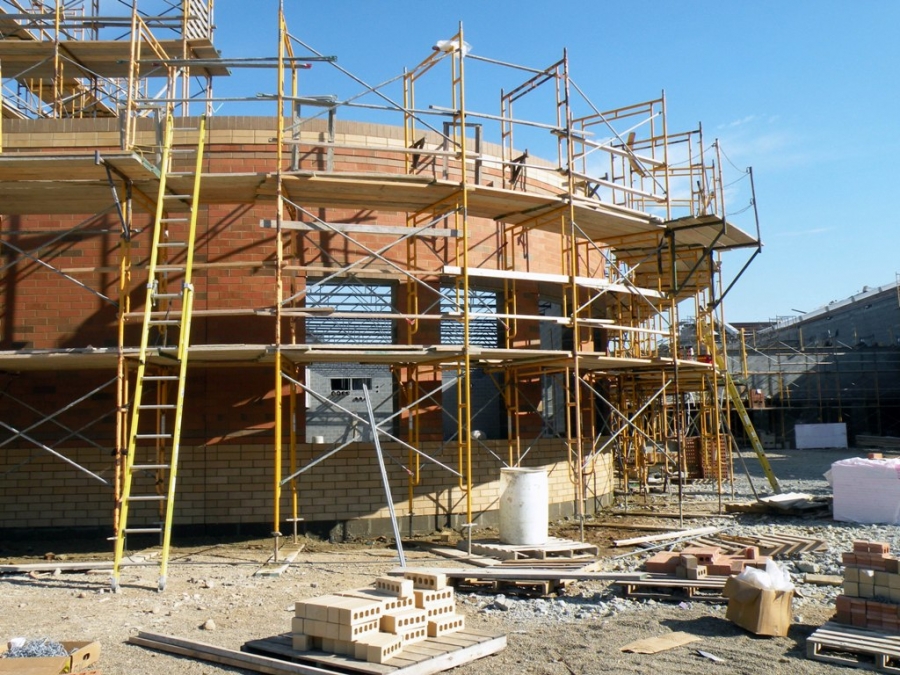
The very nature of scaffolding systems place construction workers in environments where safety considerations become extremely important. Installing or using scaffolding incorrectly can create conditions in which an accident is likely to occur. It is estimated that 65% of construction industry professionals work on scaffolds on a frequent basis. The end user of a scaffolding system is responsible for designing and assembling all the components in such a way that the completed system will meet all the requirements set forth by the Occupational Safety and Health Administration (OSHA). In 2007, there were 10,188 citations issued by OSHA for scaffolding violations. The top violations issued were for inadequate access, inadequate or unavailable fall protection, and platforms that were not fully planked.
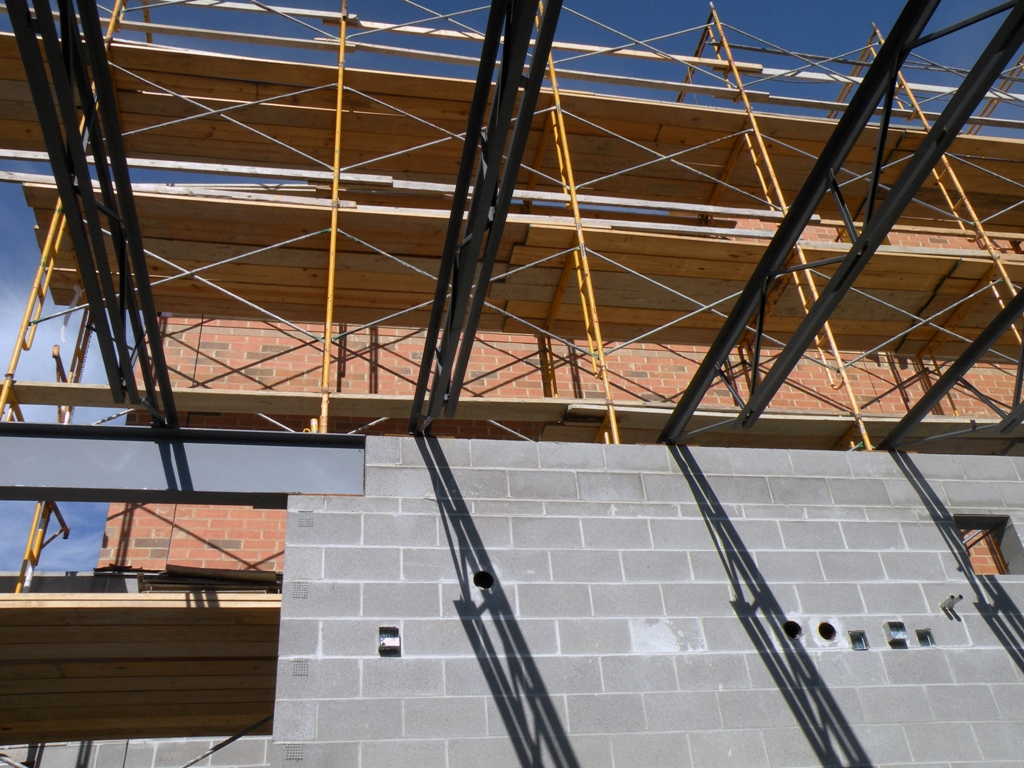
Because they are versatile, economical, and easy to use, the most common types of scaffolding utilized today are frame scaffolding systems (typically used by masons and painting contractors). Depending on the type of scaffolding used, when it reaches a certain height, it is necessary to secure the framework to an existing structure or building element to provide stability.
Basic Types of Scaffolding (Per OSHA)
- Supported: Working platforms supported by rigid, load-bearing members, such as steel poles, legs, or frames.
- Suspended: Working platforms suspended by ropes or other non-rigid means from an overhead structure.
- Other Types of Scaffolding: Includes man-lifts using mechanical equipment such as telescoping platforms, scissor-lift platforms, or other multi-axis platform lifts.
Types of Supported Scaffolding
- Frame Scaffold: This is the most common system in use. It consists of wood or aluminum platforms supported on fabricated end panels and other supporting members.
- Mobile Scaffolding: This is a scaffolding system that is supported on wheels or casters, allowing the system to be manually moved around the construction site.
- Pump Jack: The working platform is supported on vertical posts that are secured to the building. It is possible to manually adjust the working platform in a vertical direction by means of specially designed pump jacks at each vertical post.
- Ladder Jack: The working platform of this system is supported on special brackets intended to rest on the rungs of two ladders.
- Tube and Coupler: This system offers greater versatility and strength to serve special construction or maintenance projects. It is made up of individual pipes or tubes of varying lengths, which are assembled by couplers.
- Pole: This system refers to scaffolding where all the structural components are made of wood members. This system is rarely used because of the time it takes to construct it, and its lack of mobility.
Types of Suspended Scaffolding
- Two-Point: Also know as a swing platform, two-point scaffolding is the most common type of suspended scaffolding. These platforms are supported by hangers suspended by two ropes or cables from overhead supports and equipped to allow the platform to be raised and lowered.
- Single-Point Adjustable: Suspended by a single rope or cable from an overhead support, the platform is equipped with a means to be moved to desired working levels. Known as the boatswain's chair, this is a common system used by window washers on high rise buildings.
- Catenary: The working platform is supported by two horizontal and parallel ropes attached to structural members of a building. Additional vertical pickups of ropes or tubes may provide further platform support.
- Multi-Point Adjustable: This platform is suspended by more than two ropes from overhead supports and is also equipped with a means to allow the platform to be raised and lowered.
- Needle Beam: This platform is suspended from needle beams. Ropes or cables secure the needle beam to the building structure above.

Buildipedia Staff
The Buildipedia research and writing staff consists of dozens of experienced professionals from many sectors of the industry, including architects, designers, contractors, and engineers.
Website: buildipedia.com/


